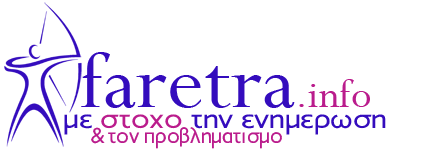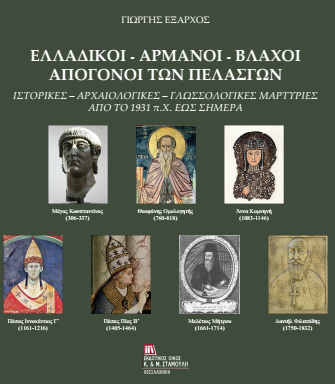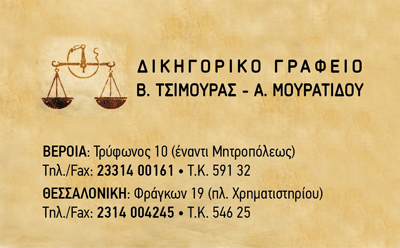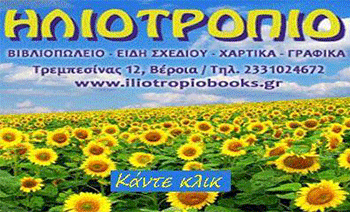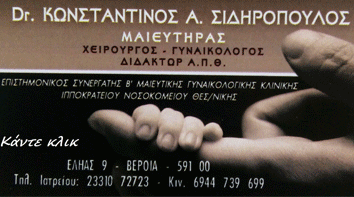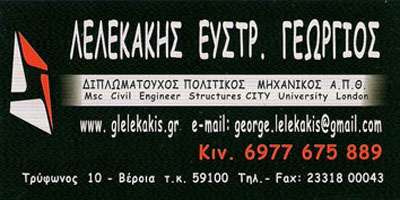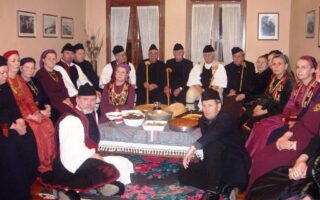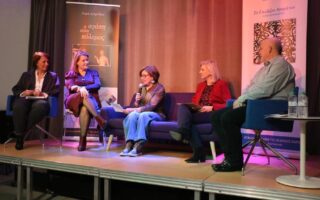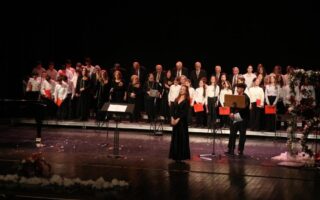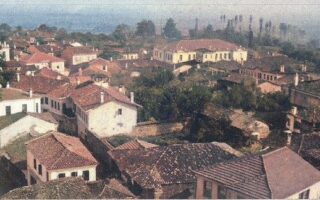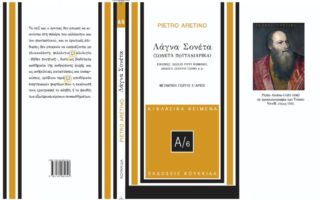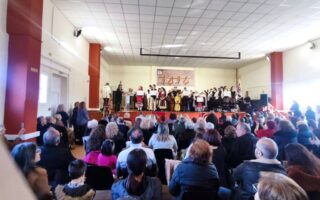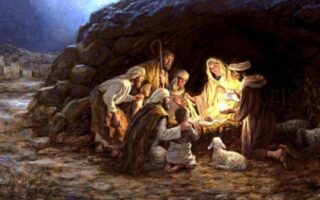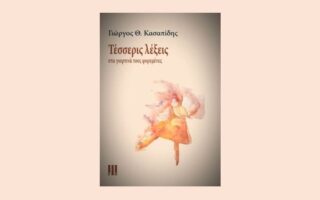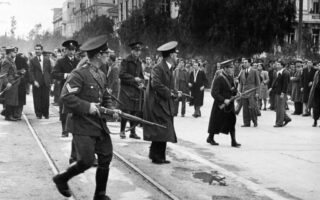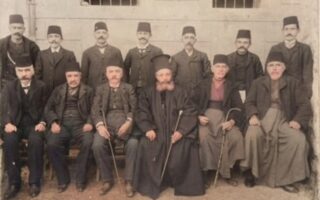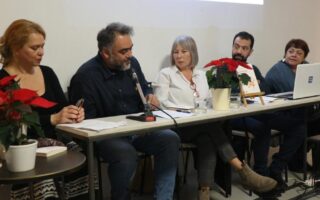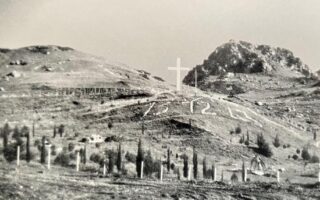“Ο λίβελος του Κεκαυμένου κατά των Βλάχων…” / Μια απάντηση του Γιώργη Έξαρχου
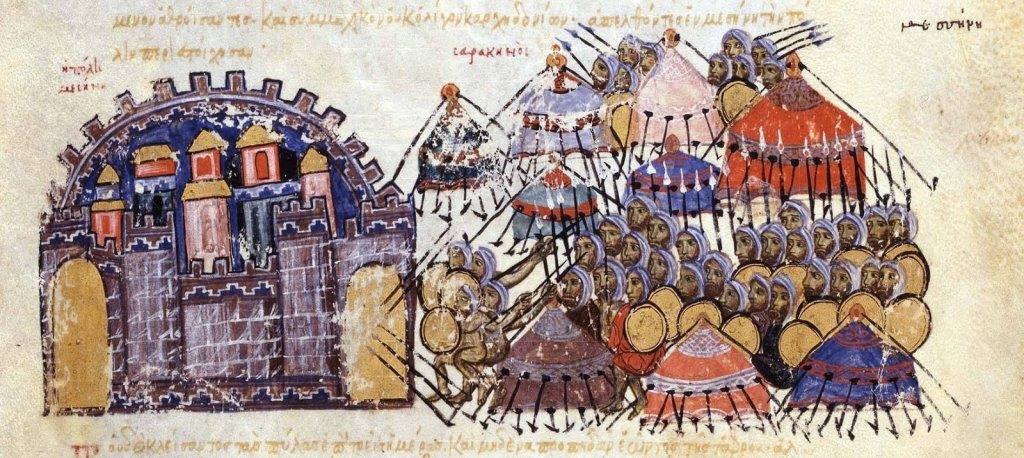
 Ο λίβελος του Κεκαυμένου κατά των Βλάχων (όντας ο ίδιος Βλάχος εκ μητρός και εγγονός του ηγέτη των Βλάχων της Θεσσαλίας Νικολίτσα), είναι τοις πάσι γνωστός:
Ο λίβελος του Κεκαυμένου κατά των Βλάχων (όντας ο ίδιος Βλάχος εκ μητρός και εγγονός του ηγέτη των Βλάχων της Θεσσαλίας Νικολίτσα), είναι τοις πάσι γνωστός:
«…το των Βλάχων γένος άπιστον τε παντελώς και διεστραμμένον, μήτε εις Θεόν έχον πίστιν ορθήν μήτε εις βασιλέα μήτε εις συγγενή ή εις φίλον, αλλά αγωνιζόμενον πάντας καταπραγματεύεσθαι, ψεύδεται δε πολλά και κλέπτει πάνυ, ομνύμενον καθ’ εκάστην όρκους φρικωδεστάτους προς τους εαυτού φίλους και αθετούν ραδίως ποιούν τε αδελφοποιήσεις και συντεκνίας και σοφιζόμενον διά τούτων απατάν τους απλουστέρους, ουδέποτε δε εφύλαξεν πίστιν προς τινα, ουδέ προς τους αρχαιοτέρους βασιλείς των Ρωμαίων…» (Cecaumeni Strategicon, et Incerti Scriptoris, De Officciis Regiis Libellus, ediderunt B. Wassiliewsky & V. Jernstedt, Amsterdam 1965. – Κεκαυμένου Στρατηγικόν).
Αναγνώστης της ΦΑΡΕΤΡΑΣ, κατοικών μάλλον στην αλλοδαπή, με επώνυμο Κοζανίτικο και δη σπουδαίας οικογένειας της Κοζάνης που έχει «ρίζα βλάχικη» από το Βλαχολίβαδο Ολύμπου, κατά δημόσια δήλωση δημοσιευμένη στον αθηναϊκό τύπο στη δεκαετία του 1990 του επιφανούς αυτού προσώπου και πολιτικού «εκ Κοζάνης», σε σύντομη επιστολή του προς την ΦΑΡΕΤΡΑ (ώστε να μου προωθηθεί), γράφει αγγλιστί ότι «δεν είναι Βλάχος» αλλά ασχολείται με την καταγωγή των Βλάχων, και ότι αμφιβάλλει για το αν ισχύει για τους Βλάχους το κείμενο (λίβελος) του Κεκαυμένου (πιο πάνω με τα μαύρα στοιχεία).
Θεωρώ εύλογο το ερώτημα, και ίσως να έχει υπάρξει και σε άλλους αναγνώστες της σειράς «Βλαχολογικοί Ίαμβοι και Ανάπαιστοι…» ή της σειράς «Διαδρομές Αυτογνωσίας…», οπότε κρίνω ως πιο «εύλογη» μια δημόσια απάντηση αντί… ιδιωτικής αλληλογραφίας.
Ο λίβελος του Κεκαυμένου κατά των Βλάχων, είναι όμοιος με αυτόν του Μαυρίκιου ενάντια στους Αβάρους, Άνταις, Σκλαβήνους, και που επαναλαμβάνεται στο Χρονικόν της Μονεμβασίας (περίπου παρόμοιος) πάλι κατά των Αβάρων! Αποτελεί, αναμφίβολα, παραγωγή αρχαιοελληνικών λιβέλων (π.χ. Αριστοφάνη, Ευριπίδη, Δημοσθένη κ.α.) κατά των Θεσσαλών, και αυτό συνιστά ένα ακόμα αποδεικτικό στοιχείο για το ότι η κοιτίδα των λεγόμενων σήμερα Βλάχων Αρμάνων (Ελληνοβλάχων) είναι η Θεσσαλία και δη το ορεινό της τμήμα – η Πίνδος.
Προς απόδειξη αυτού του πανίσχυρου «ισχυρισμού» καταθέτω πρώτα το απόσπασμα από το Στρατηγικόν του Μαυρίκιου:
«Το εις Αβάρων μοχθηρότατόν τε, και ποικίλον, και προς τους πολεμίους εμπειρικώτατον; Ταύτα τοίνυν, ως μοναρχούμενα, ουκ αγάπη, αλλά φόβω κεκρατημένα, τους πόνους και μόχθους γενναίως φέρουσιν. Ανέχονται δε καύσωνος και ψύχους, και της λοιπής των αναγκαίων ενδείας, νομαδικά όντα, περίεργα ως και κρυψίβουλα, ύφαλά τε και άπιστα όντα. Και τη απληστία των χρημάτων κρατούμενα. Όρκον περιφρονούσι, μη δε συνθήκας φυλάττοντα, μη δε δώροις αρκούμενα, αλλά πριν το δοθέν δέξονται, επιβουλήν μελετώσι, και ανατροπήν των δοκούντων, και τους επιτηδείους καιρούς δεινώς στοχαζόμενα τούτοις ανυπερθέτως κέχρηνται. Σπουδάζοντα ου τοσούτον τους εχθρούς χειρί καταγωνίσασθαι, όσον απάταις και αιφνιδιάσμασι, και ταις των αναγκαίων στενώσεσιν.» (Arriani Tactica & Mauricii Artis Militaris Libri Duodecim, Omnia Nunquam ante publicata, Graece primus edit, Versione Laetina Notis que illustrat Johannes Schefferus Argentoratensis. Upsaliae, Cum Regio Privilegio Excudit Henricus Curio S.R.M & Academiae Upsaliensis Bibliopola, Anno MDCLXIV [1664] – Serenissimae Principi Ac Dominae, Dominae Christinae Svecorum, Gothorum, Vandalorumque Reginae etc. etc. Dominae svae Clementissimae – Μαυρικίου Στρατηγικόν).
Και τι λένε οι λίβελοι των αρχαίων Ελλήνων συγγραφέων κατά των Θεσσαλών;
-
«Διαβάλλονται δε οι Θετταλοί ως ανδραποδισταί και αισχροκερδείς άπιστοι· αεί γαρ τα των Θεσσαλών άπιστα, η παροιμία φησίν. Και Ευριπίδης (εν Ινοί) ‚πολλοί παρήσαν, αλλ’ άπιστοι Θετταλοί‛.» (Αριστοφάνης – Aristophanis Comediae, Accedunt, Perditarum Fabularum Fragmenta Ex Recensione G. Dindorfii, Tomus IV, Scholia Graeca Ex Codicibus Aucta et Emendata, Oxonii MDCCCXXXVIII, σ. 175)».
-
«Εισί τα των Θετταλών άπιστα δήπου φύσει ταύτα, και αεί πασιν ανθρώποις» (Demosth. Olynth. r.).
-
«Διεβάλλοντο γουν οι Θετταλοί ως ου μόνον τούτοις χαίροντες, αλλά και ληστείαις. αφ’ ων οι έμποροι ανδράποδα ωνούμενοι εις τας ετέρας επώλουν ηπείρους.» (Scholia Graeca in Aristophanem, Cum Prolegomenis Grammaticorum, Varietate Lectionis Optimorum Codicum Integra, Ceterorum Selecta, Annotatione Criticorum Item Selecta, Cui Sua Quaedam Inseruit Fr. Dubner< Parisiis, Editore Ambrosio Firmin Didot, Institui Regii Franciae Typographo, MDCCCXLII, σ. 352).
-
«Σόφισμα λέγει την απάτην, παρόσον οι Θετταλοί παραδίδονται ποικίλοι τα ήθη. […] Θεσσαλόν σόφισμα: ‛Λέγεται όταν ποιή τις εαυτόν είναι ασθενή, όντα ισχυρόν, ή όντα πλούσιον, και ποιή εαυτόν πτωχόν.‛» (Euripidis Tragoedia Phoenissae Cum Scholiis Graecis, In Usum Lectionum Iterum Edidit Adhibitis Valckenaerii, Brunckii et Porsoni Recensionibus, Hugonis Grotii Versionem Latinam Indicemque Verborum Adiecit Christian. Godofr. Schutz., Halae MDCCCXXI, σ. 232-233).
Αυτά «χοντρικά» αναπαρήγαγε ο Κεκαυμένος, και δεν είπε τίποτα καινούριο! Έδειξε με το «γραπτό» του τον βλάχικο γραικυλισμό του, γιος Βλάχας και Αρμένιου, προς δόξαν όλων εκείνων που σήμερα μπορούν να τον επικαλούνται, δημοσιοποιώντας έτσι την απύθμενη αγνωσία τους των ιστορικών πραγμάτων. Και όπως έχει πει ο Ρήτωρ Δημοσθένης: «Εισί τα των Θετταλών άπιστα δήπου φύσει και αεί πάσιν ανθρώποις»! Ναι, έτσι είναι οι Βλάχοι και σήμερα, όπως ήταν οι πρόγονοι τους Πελασγοί της Θεσσαλίας πριν πολλές χιλιάδες χρόνια, και τους οποίους λιβελογράφησαν έξοχα οι μεγάλοι συγγραφείς της αρχαιότητας…
Για τον φίλο αναγνώστη, που θέλει να μάθει την ΑΛΗΘΕΙΑ για τους ΒΛΑΧΟΥΣ, συνιστώ την εκ 2.476 σελίδων πρόσφατη μελέτη μου των Εκδόσεων Αντ. Σταμούλης – Θεσσαλονική (φωτογραφία εξωφύλλου), της οποίας δίνω και μετάφραση της περίληψής της στην αγγλική γλώσσα.
————————
*Γιώργης Σ. Έξαρχος / Συγγραφέας – Ερευνητής / Βιογραφικό – Κάνετε κλικ
Σημείωση Φαρέτρας: Όλα τα κείμενα / εργασίες του Γιώργη Έξαρχου μπορείτε να τα διαβάζετε κάνοντας κλικ στον σύνδεσμο ΕΔΩ
———————-
Chronologion of Hellenic or Vlachs,
otherwise Armani descendents of Pelasghians
(Translation: Ιωάννης Β. Σούλης)
The current Χρονολόγιον Ελλαδικών ή Βλάχων, τουπίκλην Αρμάνων
Απογόνων των Πελασγών‚ Chronologion of Hellenic or Vlachs, otherwise
Armani descendents of Pelasghians‛ is an outcome of years lasting research
work based on 1200 research items coming from over 500 writers. A
systematic study of Ancient Greek, Latin, ‚Byzantine‛ and medieval works
was performed, along with numerous chronicles (Hellenic, Russian,
Serbian, Hungarian, Italic, Armenian, Germanic, French and others), with
careful selection of places and villages regarding Aemos Peninsula peoples
who either colonized this region or colonized other places and to peoples
who stormed or established themselves in the current Balkan countries,
thus searching the historic truth about the Vlachs.
The detail analysis drove to apocalypses of numerous sources for the
Vlachs. The integrated study conclusions differ from the sovereign and
established ideas. I present them as follows:
1) The term Vlach/Vlachs exists at least from the 14th century B.C. and it
is related to the Hebrew kings.
2) The term Vlach/Vlachs in the Hellenic language came out from the
word ‚Δράκος/Δράκοι‛ – ‚Dragon/Dragons‛, Δ turns to B in the Aeolic
language as follows: Δράκος/Δράκοι à Βράκος/Βράκοι or Βλάκος/Βλάκοι
à Βλάχος/Βλάχοι [= Vlach/Vlachs], as it is reported by Anna Komneni,
Johannes Fillis, and Laonikos Chalkokondylis.
3) The term ‚Αρμάν/Αρμάνος‛ – ‚Arman/Armanos‛, ‚as the Vlachs call
themselves in Greece‛, exists at least from the Danaos times and the word
‚αρμάν‛ – ‚arman‛ in the Phrygian language means the warrior, as the
word ‚αριμάνειος‛ – ‚arimanios‛.
It does not come from the word romanus with the adding a, as it is
generally accepted.
4) The ‚Αρμάνοι‛ – ‚Armanoi‛ are the remains of the Pelasghians who
are carriers of the ‚ελληνοϊταλικής‛ ‚greekitalian‛ or ‚ελληνολατινικής‛
or ‚greeklatin‛ language as Th. Momsen wrote, i.e. they spoke the
Pelasghian language and these Pelasgians are the people who transmitted
it to the ends of known world.
5) Certain ‚byzantine writers‛ during 12th to 14th A.D. centuries called
the Vlachs of Greece with the term ‚Ελλαδικοί‛ – ‚Hellenici‛ (‚Greekish‛)
or Sikyonioi, while others from 3rd to 14th centuries A.D. called them
‚βουργάριους‛ – ‚bourgarious‛ or ‚Βούλγαρους‛ – ‚Voulgarous‛, having
nothing to do with Asparuch Bulgars who emigrated around 680 A.D.
6) Scythians were bilingual people and spoke the ‚ελληνολατινική‛ or
‚greeklatin‛ language. A great number of Scythians swept the Hellenic
peninsula as early as in 3rd A.D. century and in the subsequent centuries.
The forefather roots of these Scythians ware Thessaly from where they
immigrated to Scythia as Pelasghians. This is the reason the ancient Greek
sources named Deucalion as Scythe, generator of Greeks (Hellenes), as well
as the first Hellen of antiquity, Achilles, who was also called as Scythe.
7) The Vlachs of Greece dwelt from aboriginal ‚Armanoi‛ and Scythian
immigrants. Through the centuries, the Pelasghian ‚ελληνολατινική‛ or
‚greeklatin‛ language underwent osmosis, without being one and single.
Throughout Europe the Vlachs are descendents of the Greekvlach
(Ellhn;oblaxoi) ‚Αρμάνοι‛ – ‚Armanoi‛ or those dwelling from Scythian
Vlachs.
8) Numerous historic and language proofs, show that the ‚Αρμάνοι
Βλάχοι‛ – ‚Armanoi Vlachs‛ are Pelasghoi and that the ‚αρμάνικη
βλάχικη‛ ‚arman vlach‛ laungage is Pelasghian,.
During the research period the following important findings emerged:
1) It is a myth the early Slave movement into the Hellenic countries. The
contemporary historians consider as Slaves the Sclaveni or Sclavini or
Sclavi etc. of the historic sources. However, they were Getae, as explicitly it
is reported by Simokattes and Photius the Patriarch, as well as in the
Russian Chronicle of Nestor who specifies that the Slaves crossed the
Danube river in the year 860 A.D.
2) Cyril and Methodius were not born in Thessaloniki and they were
neither Greeks nor Slaves, but Sclaveni or Sclavini from Transylvania. They
were Transylvanian Getae. Transylvania at that time was a territory of the
Great Moravia where the two brothers acted.
Sources refer that Getae spoke ‚ελληνολατινική‛ or ‚greeklatin‛
language and were genetically similar with Dacians, constituting part of
Scythians.
Numerous conclusions from the current research work tumble
the<established things.
The reporting of facts from original sources gives rise to my allegations
referred to the knowledge field and not to simple thought expression.
In conclusion:
The Vlachs of the Hellenic countries have two starts: a) part of them are
aboriginal and are called ‚Αρμάνοι‛ – ‚Armanoi‛. They are descendents of
Pelasghians (rich is the language material that is brought by me), b) the
other part comes from the bilingual Scythian people who immigrated as
Sclavi and Sclavini etc., and at a certain time they were called Bulgarians
and from the 10th century A.D. onwards they exist as Vlachs.
The name Wallachia for the upper to Danube river country is credited to
Vlachs who emigrated there from the Hellenic countries round 1220-1230
A.D. into Transylvania and thereafter they moved to Muntenia and Oltenia
subsequently was called Wallachia (Βλαχία).
I think that with the current research work I have solved the historic
problem ‚Βλάχοι‛ ‚Vlachoi‛ without acrobacies of imaginative hypotheses
and theories. Sources lead to fluent conclusions. I expect your formal
criticism.
Yioryis Exarchos
